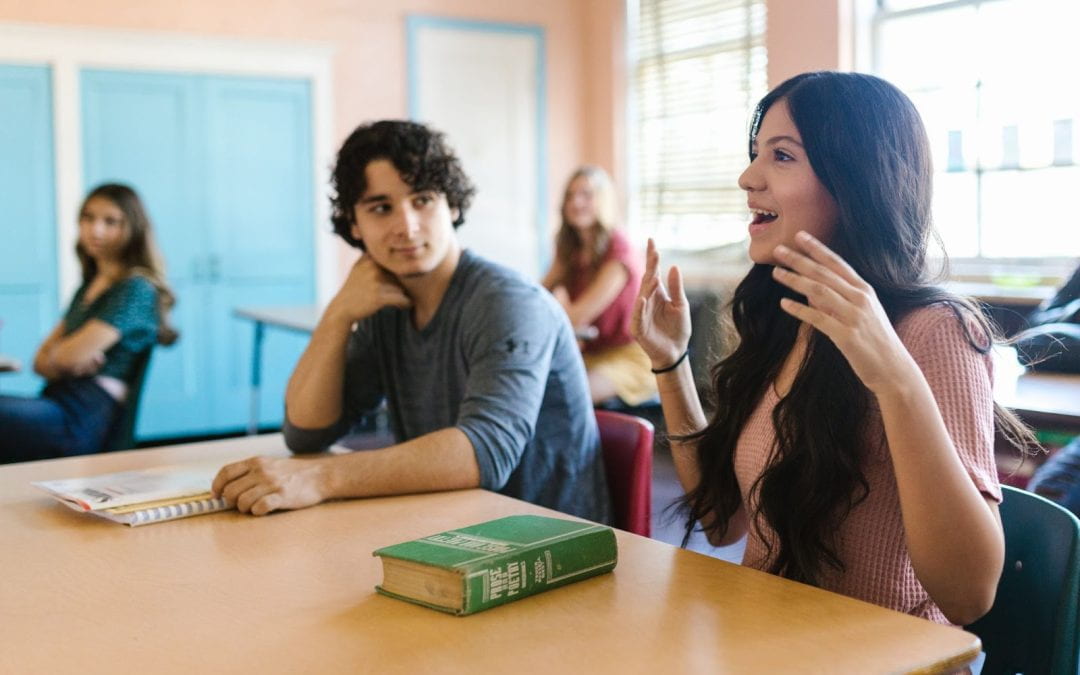This post is part of an ongoing series to promote active learning strategies and teaching tools that can support instructors in using them. Academic Technology Solutions (ATS) is hosting the new active learning series Try IT: Academic Tech for Active Learning. The first session will be on Thursday, April 20 at 3:30pm. Visit the website for details and registration.
Keeping students engaged during three-hour-long evening classes can be a real challenge. For Jamie Shah, Adjunct Assistant Professor of Entrepreneurship at UChicago Booth, using active learning techniques helps her students stay awake and engaged.
A Pattern for Starting Class
“I start every class with an icebreaker,” Shah says, in order to get students talking and to preview topics that will come into closer focus as the evening class progresses. In her class “Outperform and Outlast: Operation and Investing in Closely Held Businesses,” she asks students to submit pictures in Canvas of what they believe to represent a family business, and she selects a few to discuss during the first day.
This exercise not only surfaces the different assumptions students hold about family businesses, but also encourages personal storytelling and even spirited debate. “People were really engaged and getting up in arms” about whether a particular business qualified as closely held, based on a number of criteria. “It made [the topic] so much more sticky for them,” according to Shah.
After the icebreaker, Shah provides students with a “roadmap”, explaining how the current class session relates to previous ones as well as how it corresponds with future directions. In each three-hour class, Shah estimates she spends about a third of the time lecturing, with the rest of the time devoted to discussion and other learning activities.
Engaging Students through Discussion and Reflection
Shah draws from a range of resources in thinking about and approaching student engagement. She cites the Harvard Graduate School of Education (HGSE)’s Thinking Routines Toolbox as a helpful resource to not only help guide students’ discussions during class, but also to prompt their reflection afterwards. According to HGSE, a thinking routine is “a set of questions or brief sequence of steps used to scaffold and support student thinking.” Common examples of these routines include “Think, Pair, Share” and “See, Think, Wonder.”
After each class session, she has students submit short reflections as Canvas assignments. In the assignment prompt, she notes how reflection is essential to adopting the habits of a lifelong learner. In one such prompt, she asks students, “What surprised you most about today’s discussion and why?” This is also one of the questions that noted adult learning expert Stephen Brookfield lists as a part of his formative evaluation tool called the classroom critical incident questionnaire.
Helping Students Hold One Another Accountable for their Participation
To ensure broad engagement during class, Shah has students help hold one another accountable by grading one another’s participation. At the end of each class, she asks students to submit a Google Form with the three most meaningful comments they heard, and who said them.
“It takes the burden off me from grading participation,” Shah notes, while also encouraging students to learn each other’s names and participate in discussions thoughtfully. In the following class session, Shah highlights the top comments, which energizes students who receive recognition and also encourages future participation from the rest of the class.
Collecting Student Feedback After Each Class
Shah regularly collects student feedback after each class with Canvas Quizzes. The kinds of questions Shah asks range from gauging students’ perceptions of course design (“The lectures, tests and assignments all complemented each other”) and pacing (“An appropriate amount of time was spent on discussing the case study”) to the classroom environment (“The class environment feels like a welcoming place to express my ideas”).

A chart showing Canvas Quizzes survey results data showing students’ perception of the classroom environment for one of Shah’s classes.
Shah also shares the feedback she receives from students using the survey statistics tool in Canvas. She uses this information to make adjustments to her course, both in the shorter term and in the longer term.
Shah credits Ilknur Gonul and the Instructional Design team at the Booth School of Business for consulting with her on her course and helping brainstorm ways to engage students, and the Academic Technology Solutions team for assisting her with her Canvas courses.
Further Resources
- Learn more about ATS Office Hours and upcoming workshops.
- For consultations, please contact us.

